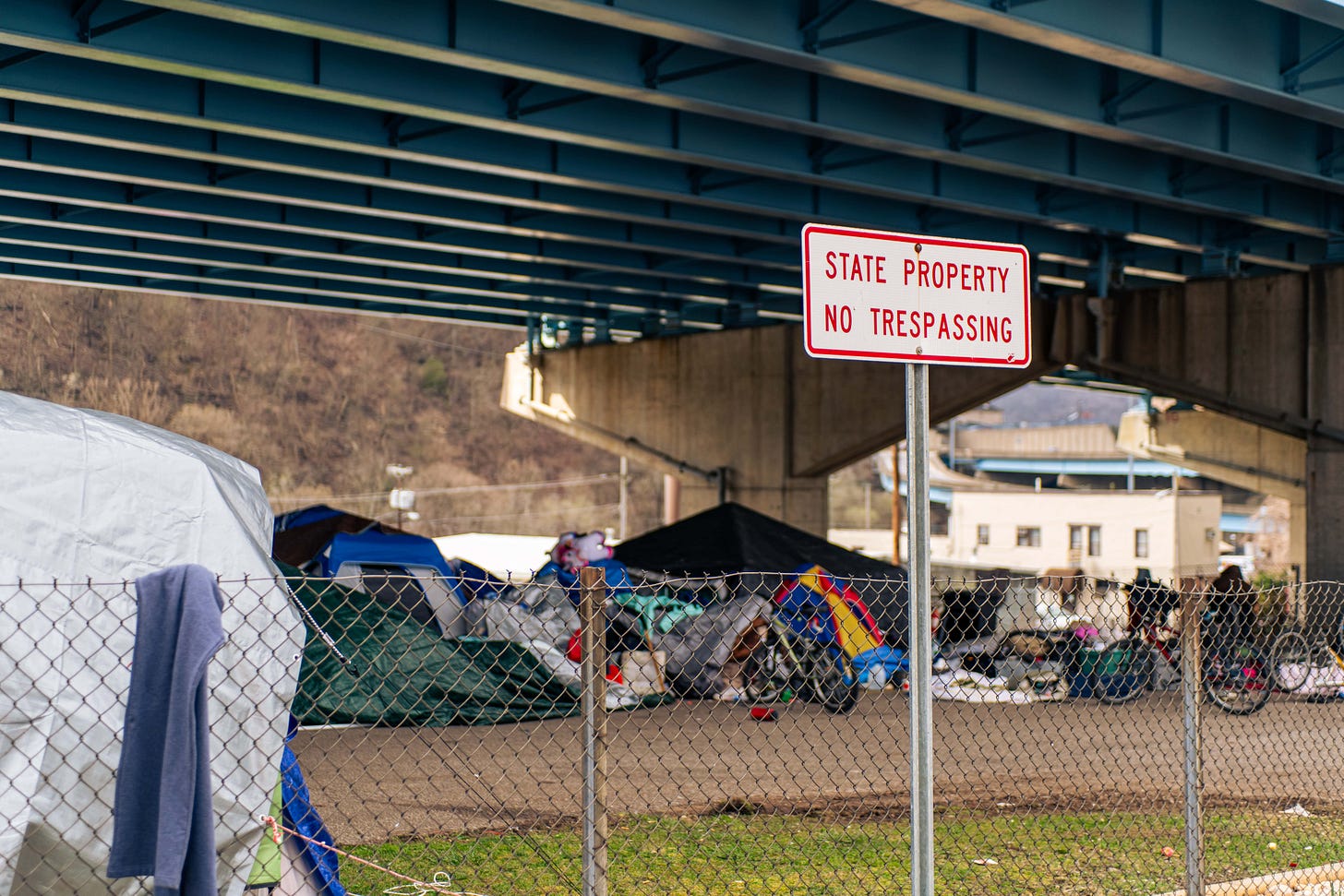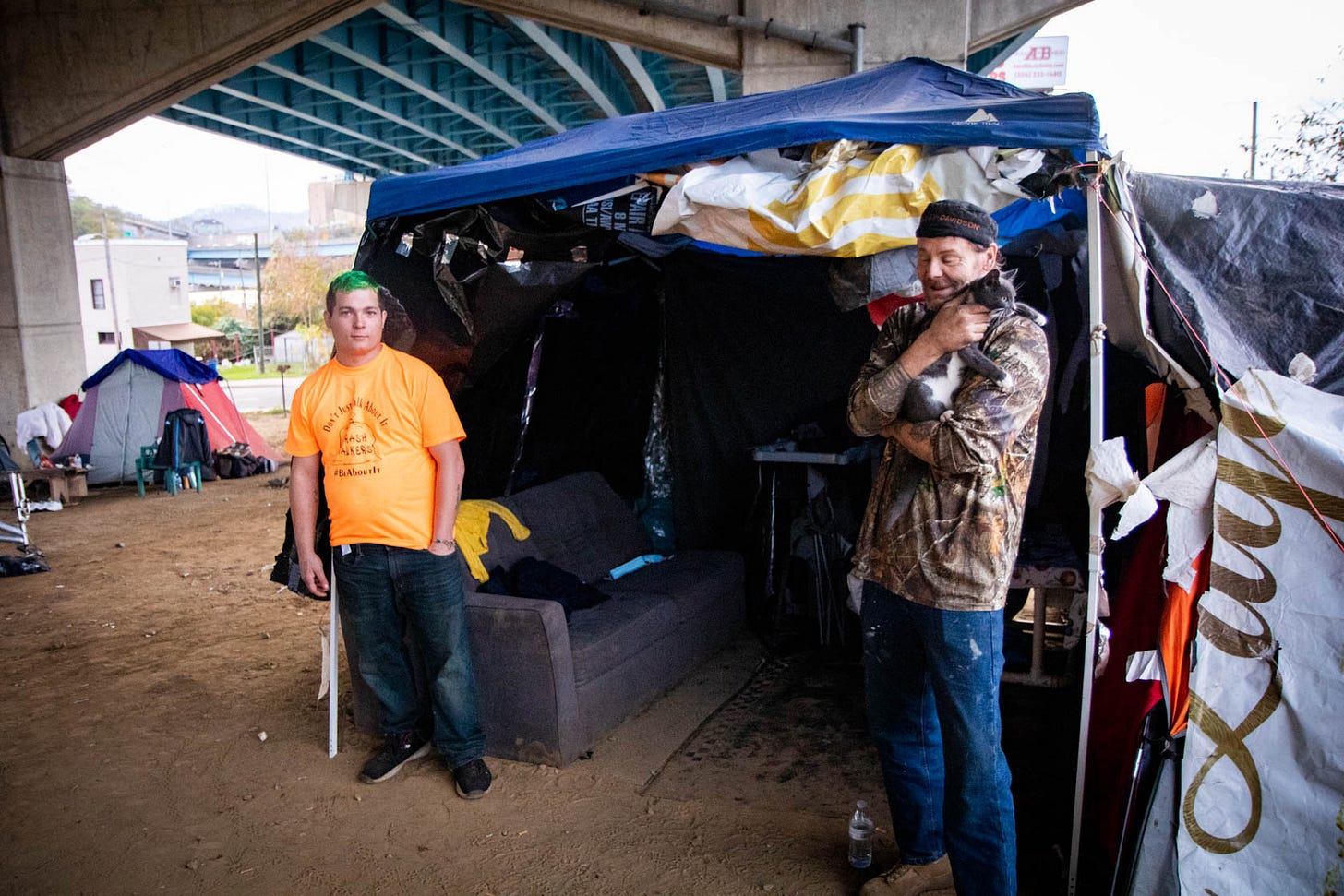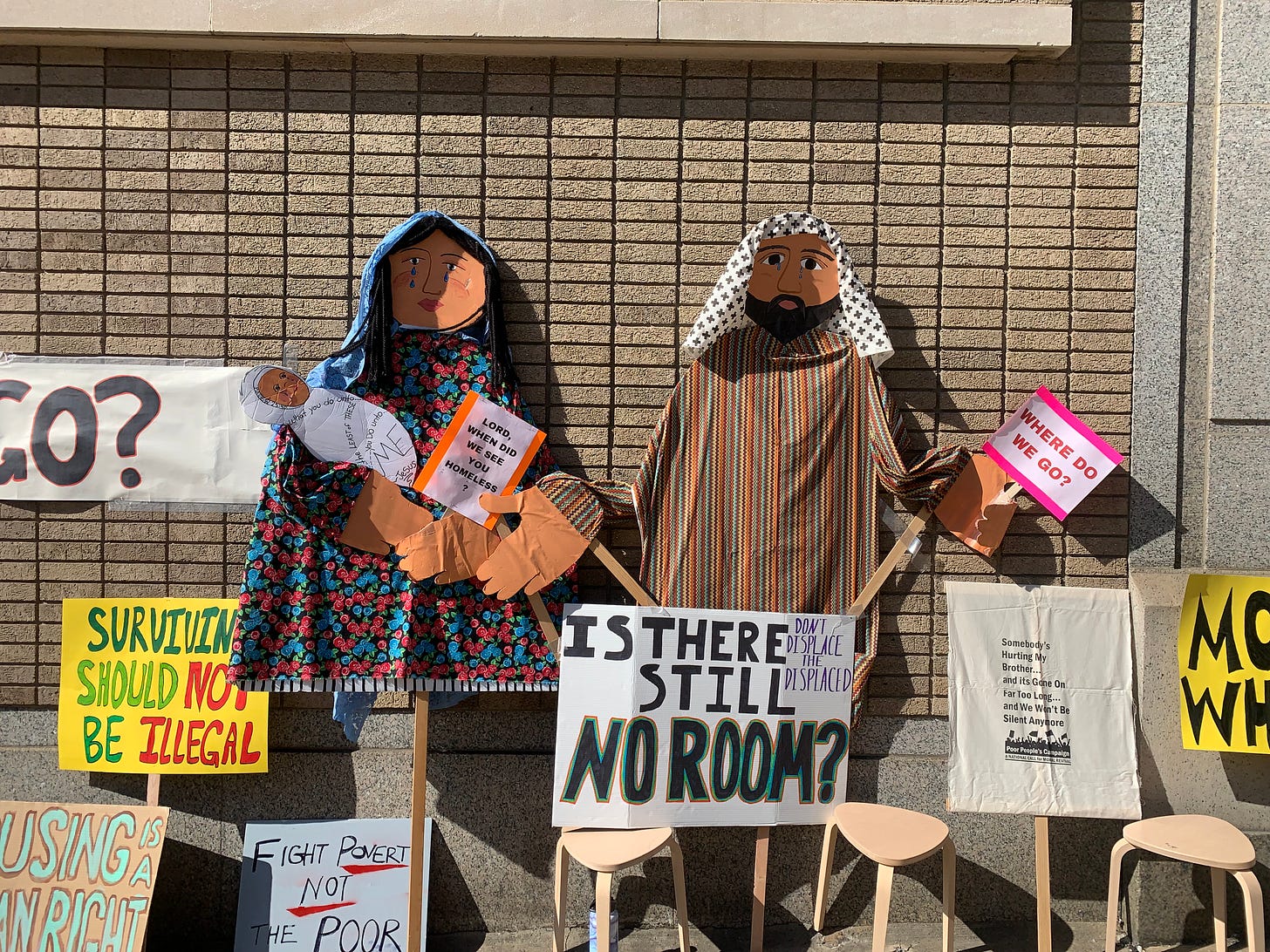Wheeling spends on average $5200 to demolish a homeless camp. Is it worth it?
Through a Freedom of Information Act request it has been revealed that the city of Wheeling spent $77,622.81 since September 13 on the demolition of homeless camps. Is it worth the cost?

On January 18, 2024, the city of Wheeling, ordered by city manager Robert Herron, demolished several homeless camps in the east Wheeling neighborhood. The people displaced from this hillside were moved to a site under US-250 on 18th Street. Now, these people again face eviction after the West Virginia Division of Highways, who owns the property, notified the city of their intentions to clear the camp.
Service providers, activists, journalists, and the affected homeless population had several questions after the January demolitions, many of which went unanswered. One of those queries, though, now has an answer: how much does the city spend to remove a camp?
$4,903.37 – this is what the city of Wheeling spent over nine hours on January 18 to remove half a dozen camps, including some of the residents' entire existence. At least one couple had packed their remaining items from their foreclosed house neatly into totes and were waiting for a volunteer to return with their trailer when the city callously sent them to the dump.

This cost, nearly five-thousand dollars, included one backhoe, one front loader, three dump trucks, three heavy equipment operators, one maintenance leadworker, and four laborers. It does not include the pay of the three Wheeling police department law enforcement officers who accompanied the city workers.
The Hudson Editorial obtained this information through a Freedom of Information Act request. In that request, this reporter asked specifically for information regarding the January 18 demolitions. However, rather graciously, the city’s Operations department provided data for fourteen other, previously unreported, demolitions that have occurred since September.
Beginning on September 13, 2023, and ending on March 8, 2024, the data shows a total of $77,622.81 spent by the city of Wheeling over a seven month period for “camp removals.” That means the city, on average, spent $11,089 per month to achieve its goals.
This data needs a few clarifications that I will attempt to detail below.

For reference, the Life Hub’s Winter Freeze shelter, which closed March 15, is estimated by administrators to cost $46,000 per month to operate. While many questions should be asked about how those funds are being spent, the money expended by the city since September 13, 2023, to demolish camps could have kept this low barrier shelter open until May 5.
It’s also important to consider that the months of October, November, and December saw no reported removals in the data provided by the city. When you exclude these months, the total spent per month where removals occurred (four) is $19,406. And, if you take the total spent since September 13 and divide it by the fifteen demolitions detailed in the report, the city spent roughly $5,174.85 per removal.
City Solicitor Rosemary Humway-Warmuth, who responds to FOIA requests, noted that these totals do not include costs related to “clean-ups” as the FOIA request submitted by this reporter to the city did not expressly request those figures.
Another clarification of this data is that the dates included, fifteen in total, may include removals of “abandoned” camps. This reporter asked a service provider to attempt to decipher the listed dates to show what camps were inhabited, but that request went unanswered.
And, lastly, this data lacks any reference point. Locations are not listed, nor is any supplemental information, like internal memos, directives, or guidelines, available. The only information received were costs per date and per equipment/worker. A request for clarification was made after receiving the information, but as of publication no response has been received.

The vast majority of dates, thirteen in total, are unfamiliar to this reporter. The two dates that are recognizable include January 18, as discussed above, and January 3.
On January 3, 2024, the city amassed about a dozen employees and several heavy machinery in an attempt to illegally demolish an occupied camp without warning. After the fact, it was told to this reporter that the city believed the camp to be abandoned. The camp was ultimately spared; and thankfully, too, as a front loader came within feet of a tent where a man was sleeping.
Despite no action being taken to remove a camp on January 3, $4,303.36 was spent over a roughly eight hour period. The reported machinery (four) and workers (seven) on site match with eyewitness reports of the event. So, without any qualifying information, it is to be assumed that the provided data for January 3 details this attempted camp removal.
Of the months showing demolition activity by the city since September 2023, February 2024 was the costliest at $28,635.76 spent to achieve five demolitions. This month, the city conducted camp removals on February 1, 2, 5, 13, and 16.
While this data provides answers to some questions many still remain. Is spending $5,200 on the average camp demolition worth it? When camps are demolished by the city where does the administration expect people residing in them to go? How much would it cost the city to house people rather than destroying their makeshift residences?

Ultimately, the issue of homelessness will not be solved by demolition. For every camp that is closed another one is erected further from the eyes of the city government. Without adequate shelter beds, a managed camp, and an influx of affordable, low-barrier housing options people will continue to camp out of necessity.
No ban will stop someone from seeking shelter, no fine will remove people from the streets, and no bombastic language from politicians will fix the problems that cause homelessness.
If the city wants to solve homelessness in the area–a gargantuan task–it won’t do so through its current efforts. Demolition causes instability, continued trauma, and uncertainty. Three things that, combined, only seek to worsen the problem for folks. And while many in the city have spoken about a managed camp, no site nor funding has been identified. The current plan for an exempted camp will see folks, some of whom have physical disabilities, trek a mile through the woods to seek services in east Wheeling.
This is a nationwide problem searching for local solutions. Federal and state governments need to step up and support municipalities; but those same municipalities can take steps to improve their situation while they lobby for more assistance. The city of Wheeling, the friendly city, has a moral obligation to do what it can to lessen the burden on our most vulnerable neighbors.

